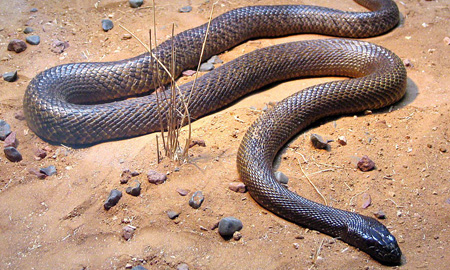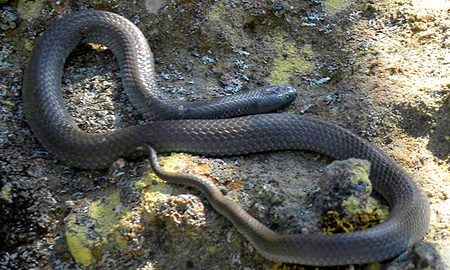Introduction
When it concerns the fascinating world of serpents, few varieties catch the imagination quite like the infant tiger snake. Recognized for their distinctive pigmentation and potent venom, these snakes are an essential part of Australia's distinct community. In this comprehensive post, we will look into various aspects of infant tiger serpents, including their habits, environment, and just how to safely interact with them. Whether you're a wild animals fanatic or just curious concerning these creatures, comprehending child tiger snakes can aid promote a deeper gratitude for nature.
Baby Tiger Snakes: What You Required to Understand About Their Actions and Habitat
What Are Baby Tiger Snakes?
Baby tiger snakes are adolescent kinds of the very poisonous varieties recognized scientifically as Notechis scutatus These snakes are primarily located in seaside regions of Australia, especially in Tasmania and southerly Victoria. As they expand, their pigmentation adjustments from a more muted combination to the particular yellow and black bands that give them their name.
One noteworthy aspect of baby tiger serpents is their size; hatchlings generally gauge around 25-30 cm in length. Despite their small stature, they have an unusual quantity of venom that can be detrimental to people if bitten.
Physical Characteristics
Tiger serpents possess several vital physical qualities:
- Coloration: The distinctive banding pattern frequently becomes extra noticable as they mature. Size: Grownups can reach sizes of approximately 2 meters. Body Shape: They have a robust body that assists in swimming and terrestrial movement.
Where Do Baby Tiger Snakes Live? Comprehending Their Habitat
Understanding the environment choices of child tiger snakes is vital for both conservation efforts and public safety. These serpents thrive in various settings:
- Wetlands: Marshes and swamps give sufficient hunting grounds. Coastal Regions: Commonly located near beaches where they can search for prey. Woodlands: Dense vegetation uses cover from predators.
Geographical Distribution
Tiger snakes are mostly discovered along Australia's southern coastline, including:
- Tasmania: Home to among one of the most notorious populations. Victoria: Specifically in areas near water bodies.
Are Tiger Snakes Venomous? A Deep Dive into Their Venom
One usual question arises when reviewing child tiger serpents: "Are tiger snakes venomous?" The solution is a resounding yes!
Venom Composition
The poison of tiger serpents includes neurotoxins that can trigger paralysis, coagulopathy (blood clot problems), and potentially death if without treatment. Here's what you require to recognize:
- Effects on Humans: A bite from a tiger serpent can result in signs like swelling, pain at the bite website, queasiness, and also respiratory system failure.
Comparison with Other Venomous Snakes
In contrast to various other Australian snakes such as the eastern brownish serpent or king brown snake, tiger serpent poison is considered among one of the most powerful. However, deaths are rare due to improved clinical therapies and access to antivenom.
Behavioral Patterns of Child Tiger Snakes
Understanding exactly how baby tiger snakes act is critical for those that live in or go to locations where these reptiles are prevalent.
Nocturnal Habits
Most baby tiger snakes exhibit nighttime behavior. They have a tendency to forage for food during cooler night temperature levels. This adaptability aids them Article source avoid predators while enhancing their hunting efficiency.


Hunting Techniques
Their hunting techniques consist of:
- Ambush Predation: Waiting stationary till prey comes close. Active Foraging: Actively moving through vegetation or along waterways searching for food.
First Aid for Serpent Bites: What You Must Know
Despite being remarkable creatures, encounters with child tiger serpents can lead to hazardous circumstances if bites happen. Recognizing emergency treatment procedures can conserve lives.
Immediate Steps After a Bite
Remain calmness; panic boosts heart rate. Immobilize the influenced arm or leg using a splint or bandage. Seek prompt medical interest-- antivenom might be necessary.Creating a Snake Bite First Aid Kit
A well-prepared emergency treatment kit should consist of:
|Thing|Purpose|| ------------------------------|--------------------------------------|| Compression bandage|To debilitate the arm or leg|| Splint|Maintains broken bones or joints|| Antihistamines|Eases allergies|| Emergency call numbers|Quick gain access to more info throughout emergency situations|
Common Myths Regarding Tiger Snakes Debunked
Many myths surround these interesting reptiles; let's clarify some misunderstandings frequently held by people.
Myth # 1: All Tiger Snakes Are Aggressive
While some people may exhibit protective behaviors when intimidated, not all dugite snake tiger snakes display screen aggression towards people unless provoked.
Myth # 2: Child Tiger Snakes Are Much Less Dangerous Than Adults
This misconception could not be better from the reality! Infant tiger serpents contain nearly as much poison as adults about their size; thus they posture substantial risks if bitten.

FAQs About Infant Tiger Snakes
What do infant tiger snakes eat?- They mostly consume small mammals, birds, frogs, and fish.
- Look for slim bodies with faint banding patterns that become much more pronounced as they mature.
- Yes! Birds of prey and larger reptiles may target them.
- Typically every couple of weeks as they proliferate during their very early life stages.
- While some people do maintain them illegally without authorizations due to their dangerous nature; it's normally not suggested provided their poisonous status.
- With punctual medical treatment-- consisting of antivenom-- the survival rate is high!
Conclusion
In recap, comprehending baby tiger serpents-- what they eat, where they live, just how they behave-- can equip us with valuable expertise concerning these impressive yet unsafe animals. The value of education and learning surrounding emergency treatment steps can not be overemphasized; recognizing exactly how to react successfully after a bite can conserve lives while cultivating regard for our wriggling next-door neighbors within Australia's rich biodiversity spectrum.
By appreciating these snakes' functions within ecosystems-- and identifying possible dangers-- we advertise coexistence instead of fear-based responses toward one another's existence in nature's grand tapestry! Whether you're a passionate walker contemplating your next adventure or just curious concerning regional wildlife encounters near home-- this guide works as your trusted referral factor on the enigmatic world lived in by our buddies-- the amazing baby tiger snake!